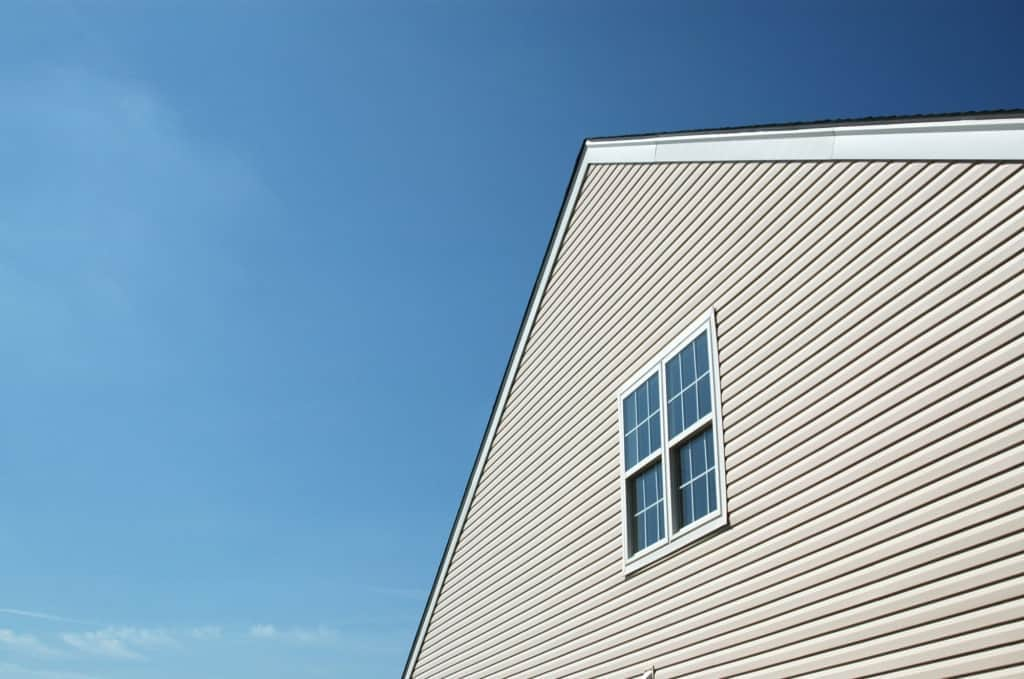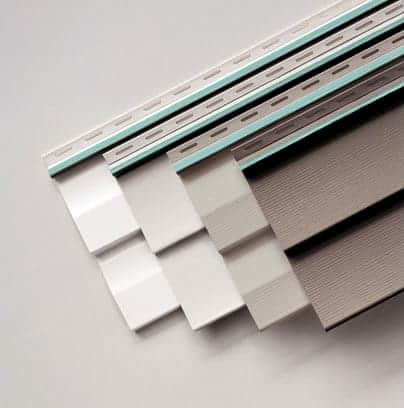Best Way to Remove Dried Paint From Vinyl Siding


How to Remove Dried Paint From Vinyl Siding
Vinyl siding is a widely favored option among homeowners owing to its durability and minimal maintenance needs, as well as its ability to enhance property value. However, it is susceptible to the adverse effects of dried paint or graffiti, which can compromise its aesthetic appeal and potentially cause long-term damage if not addressed appropriately. This article by Paramount Builders provides an in-depth exploration of vinyl siding, the various types of paint that can stain it, and effective methods for removing dried paint without causing harm, including tips on how to use cleaning solutions and tools effectively. Readers will find essential tools, step-by-step techniques, and preventive measures to maintain the pristine condition of their vinyl siding.
What is Vinyl Siding?
Vinyl siding is widely recognized as a preferred exterior material among homeowners for residential properties, owing to its durability, minimal maintenance requirements, and capacity to enhance the aesthetic appeal of a structure.
This synthetic building material effectively imitates the appearance of traditional wood siding while providing a more economical alternative that can endure various weather conditions. Available in a broad range of colors and styles, vinyl siding presents an attractive option for homeowners seeking to increase the value of their properties.
Furthermore, this material exhibits resistance to chipping, peeling, and fading, thereby ensuring a long-lasting and visually appealing exterior.
What is Dried Paint and How Does it Affect Vinyl Siding?
Dried paint on vinyl siding can significantly affect both the appearance and structural integrity of the material, potentially leading to long-term maintenance issues. When paint is permitted to dry on the surface of vinyl siding, it may create unsightly stains and damage the protective layer that is essential for maintaining the material’s durability.
Homeowners may not recognize that the presence of dried paint can also attract moisture, thereby increasing the risk of mold and mildew growth beneath the surface. Such deterioration can result in costly repairs and a decline in property value over time. The unattractive appearance of paint spots can detract from overall curb appeal, rendering the home less inviting.
To address these challenges, it is crucial to employ appropriate cleaning solutions. A combination of soap and water often suffices for light stains, whereas more stubborn spots may necessitate the use of a specialized vinyl siding cleaner. For persistent paint residue, using a plastic scraper to gently lift the paint without scratching the vinyl is recommended.
To prevent future complications, it is advisable to cover siding areas prior to painting projects, ensuring that the vinyl remains protected from drips and splatters, and to apply a protective coating to maintain the appearance and durability of the siding. By adhering to these maintenance best practices, homeowners can preserve the aesthetics and integrity of their vinyl siding while avoiding the inconvenience of extensive repairs.
What are the Different Types of Paint and How Do They Affect Vinyl Siding?
Homeowners have several types of paint available for use on vinyl siding, each possessing distinct properties that can significantly influence the material’s longevity, appearance, and maintenance requirements. It is imperative for homeowners to understand these paint types, which include oil-based, water-based, and acrylic options, in order to maintain the integrity and aesthetics of their siding.
Oil-based paints, while known for their durability, can present challenges in removal if they dry on the surface. Conversely, water-based paints are generally easier to apply but may not offer the same level of protection as their oil-based counterparts. Acrylic paints provide flexibility and resistance to fading, making them a favored choice; however, it is essential to ensure their compatibility with vinyl siding before application.
Latex Paint
Latex paint, a widely utilized water-based option, is preferred by numerous homeowners due to its ease of application and straightforward cleanup when applied to vinyl siding.
This type of paint offers a variety of benefits that contribute to its popularity in residential environments. One notable advantage is its quick drying time, which facilitates faster project completion—a significant benefit for individuals eager to achieve visible results without prolonged delays.
Additionally, latex paint is known for its durability, making it suitable for various surfaces as it resists peeling and fading more effectively than many alternatives, thus preserving the beauty of the vinyl siding. A distinctive characteristic of latex paint is its flexibility, which allows it to accommodate the natural expansion and contraction of materials without cracking.
However, homeowners should be aware of potential drawbacks, including a lower resistance to extreme weather conditions when compared to some oil-based paints. For maintenance and cleaning purposes, utilizing a mild soap solution during routine upkeep can assist in preserving the paint’s appearance without compromising its integrity.
Consequently, latex paint represents a practical choice not only for professional painters but also for those seeking a long-lasting finish with minimal maintenance requirements.
Oil-Based Paint
Oil-based paint is recognized for its durability and rich finish; however, its application on vinyl siding can present challenges due to potential long-term adhesion issues.
This type of paint is noted for its ability to provide a smooth, glossy finish that is frequently preferred for its aesthetic qualities. When applied correctly, oil-based paint can endure various weather conditions and resist wear, making it suitable for both interior and exterior surfaces.
It is important to consider the following maintenance challenges:
- Cleaning surfaces painted with oil-based products often requires specific solvents, such as mineral spirits, which can be detrimental to the environment and may necessitate additional safety measures.
- The removal process can be labor-intensive, frequently involving sanding or extensive scraping.
In conclusion, while the benefits of oil-based paint are considerable, a professional approach to both application and maintenance is imperative to mitigate potential issues.
Acrylic Paint
Acrylic paint is frequently recommended for vinyl siding due to its exceptional adhesion properties and resistance to fading, making it an optimal choice for homeowners seeking to enhance both the appearance and durability of their homes.
This versatile paint offers numerous advantages that extend beyond aesthetics. For example, its flexibility allows it to expand and contract with the vinyl siding, effectively preventing cracking or peeling that can result from temperature fluctuations. Maintenance is straightforward, as acrylic paint can be easily cleaned with soap and water, enabling homeowners to maintain their exterior without excessive effort. Its compatibility with vinyl siding ensures strong adhesion, providing long-lasting results that endure over time.
- Long-term preservation: Utilizing acrylic paint can significantly contribute to the enduring beauty of your siding.
- Vibrant colors: The retention of vivid hues over the years enhances curb appeal.
- Economic option: Although initially more expensive, the longevity and low maintenance costs render it a prudent investment overall.
What Tools and Materials are Needed to Remove Dried Paint from Vinyl Siding?
To effectively remove dried paint from vinyl siding, homeowners must utilize a range of tools and materials that facilitate thorough cleaning while preserving the integrity of the surface.
Essential items include:
- a pressure washer for gentle yet effective cleaning,
- a scraper for removing stubborn paint,
- and a soft bristle brush to scrub the area without causing scratches on the vinyl.
Furthermore, an appropriate cleaning solution, such as detergent or mineral spirits, is essential for breaking down the dried paint. Ensuring that the correct tools are readily available will contribute to maintaining both the appearance and structural integrity of the siding following the paint removal process.
Pressure Washer
A pressure washer is a highly efficient tool capable of removing dried paint from vinyl siding, but it must be utilized with caution to prevent damage to the material.
Plus facilitating paint removal, pressure washers excel in various other cleaning tasks, providing homeowners with an effective solution for rejuvenating different surfaces around the house. This efficiency is attributed to their capability to emit high-pressure water jets that effectively lift dirt, grime, and other stubborn contaminants.
Whether the surfaces include driveways, decks, patios, or garage floors, these machines can significantly reduce the time and effort typically required for cleaning, making them a valuable tool for homeowners.
- driveways
- decks
- patios
- garage floors
These machines can significantly reduce the time and effort typically required for cleaning. However, when employing a pressure washer, it is essential for users to observe several precautions. These include adjusting the pressure settings to correspond with the specific material of the vinyl siding, maintaining a safe distance to avoid splintering or stripping, and utilizing appropriate nozzles for various tasks.
By adhering to these guidelines, homeowners can ensure that their cleaning processes are both swift and safe, yielding effective results. For those looking for professional assistance, expert guidance from contractors such as Paramount Builders can provide valuable insights.
Scraper
A scraper is an essential tool for homeowners seeking to remove stubborn dried paint from vinyl siding surfaces. This versatile instrument can significantly aid in the restoration and maintenance of your home’s exterior, particularly when addressing paint buildup that may detract from its overall aesthetic appeal. By following expert guidance, homeowners can ensure quality results that enhance the siding’s durability and appearance.
When selecting an appropriate scraper, homeowners should consider the various types available, including plastic and metal options. Plastic scrapers are gentle on surfaces, making them well-suited for vinyl, while metal scrapers offer greater durability and effectiveness when dealing with tougher paint. It is imperative to employ proper techniques to avoid causing any damage to the vinyl.
To ensure safe and effective use, homeowners should adhere to the following guidelines:
- Always test the scraper on a small area first to assess its impact. Consider using isopropyl alcohol to clean the test area for a more accurate assessment.
- Employ a gentle angle to prevent gouging the surface. If damages occur, consult a contractor for an estimate on potential repairs or remodeling options.
Maintaining the scraper in good condition is also crucial. Regularly cleaning the blade with a cloth soaked in warm water and avoiding excessive force will prolong its lifespan.
Effective maintenance not only improves the scraper’s performance but also promotes a safer and more enjoyable experience in restoring vinyl siding. Following these steps can prevent the need for harsh chemicals, ensuring a more environmentally friendly approach.
Solvent or Paint Remover
Utilizing a solvent or paint remover is an effective method for dissolving dried paint on vinyl siding, facilitating a thorough cleaning process without causing damage to the surface. Products like PEC-12 or other vinyl-safe solutions can enhance this process.
When selecting the appropriate solvents and paint removers for vinyl siding, it is imperative to understand the various types available and their interactions with vinyl materials. Common options include:
- Acetone: A potent solvent that can effectively eliminate paint, but should be used with caution to prevent damage. Consider using a mixture of acetone with water-based paint removers for a balanced approach.
- Mineral spirits: A milder alternative that provides a safer option for vinyl while remaining effective against certain types of paint, such as oil-based paint.
- Commercial vinyl-safe paint removers: Formulated specifically to target paint without damaging the siding itself. Acrylic paint and graffiti-specific removers can also be effective for targeted cleaning.
Ahead of application, it is essential to:
- Test the solvent on a small, inconspicuous area to ensure compatibility.
- Apply the solvent using a soft cloth to minimize the risk of scratching.
- Ensure the area is well-ventilated and wear gloves and protective eyewear for safety.
By selecting appropriate products and adhering to safe application techniques, homeowners can effectively maintain their vinyl siding without compromising its integrity. This approach reduces the likelihood of needing future restoration or professional remodeling services.
Soft Bristle Brush
A soft bristle brush is an essential tool for carefully removing any residual paint from vinyl siding after the application of solvents or the use of a pressure washer. This brush can safely remove graffiti or stubborn oil-based paint without causing scratches.
Employing this type of brush not only facilitates effective cleaning but also protects the integrity of the vinyl surface, thereby preventing the occurrence of unsightly scratches or damage. By choosing a soft bristle brush, homeowners can preserve the aesthetic appeal of their siding while promoting its longevity.
The following are notable benefits of this critical cleaning tool:
- Gentle on surfaces, thereby minimizing the risk of abrasion.
- Effective in removing stubborn stains without the need for harsh chemicals.
- Lightweight and easy to maneuver, making the cleaning process more manageable.
To extend the life of the brush, consider the following maintenance tips:
- Rinse the bristles thoroughly after each use to eliminate debris.
- Store the brush in a dry location to prevent mold buildup. Regularly inspect it for damages that may compromise its effectiveness.
- Regularly inspect for damage and replace it if the bristles become worn.
By adhering to these straightforward practices, users can enhance the durability and efficiency of the brush, ensuring their vinyl siding remains in pristine condition for an extended period. Following expert guidance on brush care can further extend its usability.
How to Remove Dried Paint from Vinyl Siding?
Removing dried paint from vinyl siding necessitates a systematic approach to ensure effectiveness while preserving the material’s integrity and appearance. Homeowners should adhere to a series of steps that involve preparing the area, selecting appropriate tools and materials, and employing suitable techniques for paint removal.
The objective is to restore the siding to its original condition without inflicting damage, which is vital for maintaining the overall aesthetic and value of the property. By following these guidelines and utilizing the correct cleaning solutions, homeowners can successfully address this maintenance task.
Preparing the Area
Before initiating the paint removal process, it is imperative for homeowners to thoroughly prepare the area surrounding the vinyl siding to ensure a clean and effective operation.
Proper preparation is of utmost importance. Homeowners should begin by clearing any debris from the vicinity, including leaves, branches, and other objects that may interfere with the process. Additionally, it is advisable to protect surrounding plants by utilizing drop cloths or plastic sheeting, which will help prevent damage from chemicals or paint residue.
Establishing a clear and safe access path is essential for both the efficiency of the project and the safety of all individuals involved. This preparation not only protects the integrity of the siding but also minimizes potential environmental impacts.
Consider the following steps:
- Clear the area of debris.
- Cover plants and landscaping.
- Establish safe access paths.
By emphasizing these critical preparations, homeowners can effectively set the stage for a successful paint removal process.
Using a Pressure Washer
Using a pressure washer is an effective method for removing dried paint from vinyl siding; however, it is imperative to adjust the settings appropriately to prevent any potential damage.
To ensure safety and efficiency while utilizing the pressure washer, it is essential to understand the ideal pressure settings for vinyl siding, which typically range between 1300 to 2000 PSI. It is advisable to maintain a distance of approximately 12 to 18 inches from the surface during operation, as approaching too closely may result in unsightly etching or warping of the vinyl material.
Plus pressure and distance, the angle of the nozzle is a critical factor in the effectiveness of the cleaning process. The nozzle should be directed at a 45-degree angle to prevent water from being forced behind the siding, which could encourage mold growth.
Incorporating specialized cleaning solutions can significantly enhance the washing process. It is recommended to select a cleaning agent specifically formulated for vinyl, applying it with a low-pressure setting before rinsing to achieve a comprehensive clean.
Furthermore, it is vital to adhere to safety precautions, such as wearing goggles and gloves while operating the machine, to protect against debris and potential chemical exposure.
Scraping the Paint
Scraping paint from vinyl siding must be conducted with caution to prevent scratching or damaging the surface while ensuring effective removal of the paint. Utilizing a soft brush or a durable plastic scraper can help achieve a clean finish.
Employing proper techniques for paint scraping is essential to achieve a clean finish without compromising the integrity of the siding. To begin, selecting the appropriate tools is critical; a plastic scraper or a metal scraper with rounded edges can significantly reduce the risk of scratches. When utilizing a scraper, it is important to maintain a 15-degree angle to the surface. This angle facilitates effective lifting of the paint without gouging the underlying vinyl.
- Ensure that the siding is clean and dry prior to initiating the scraping process.
- Start at a corner and progress across the surface, applying gentle pressure.
- If persistent areas of paint remain, consider utilizing a heat gun set on low to soften the paint before scraping.
Implementing these techniques not only assists in effective paint removal but also contributes to the longevity of vinyl siding, helping to keep it looking fresh and well-maintained.
Using a Solvent or Paint Remover
Applying a solvent or paint remover to the affected areas can significantly enhance the paint removal process, facilitating a more thorough cleaning of vinyl siding.
It is essential to select a product that is specifically compatible with vinyl to prevent any potential damage. Ahead of commencing the process, ensure that the work area is well-ventilated, and that appropriate safety gear, such as gloves and protective eyewear, is worn.
The following is a concise guide for the safe application of the chosen remover:
- Select a suitable product: Look for removers explicitly labeled as safe for use on vinyl, such as paint removers that work on both Oil-Based Paint and Water-Based Paint.
- Test in a small area: Before applying the product extensively, conduct a patch test on a discreet spot to verify compatibility.
- Apply gently: Utilize a soft cloth or sponge to apply the remover, avoiding harsh scrubbing that could damage the surface.
- Follow the manufacturer’s instructions: Each product may have different application methods and required time for effectiveness.
- Rinse thoroughly: Once the paint begins to lift, rinse the area with water to ensure that no residue remains.
By adhering to these steps, optimal results can be achieved while preserving the integrity of the vinyl siding. For additional expertise, homeowners can consult companies like Paramount Builders, which specializes in maintaining vinyl siding in areas Virginia, Florida, and part of North Carolina.
Scrubbing with a Soft Bristle Brush
For particularly tough stains or graffiti, using a specialized graffiti remover in conjunction with a soft bristle brush can enhance the cleaning process.
After utilizing solvents and scrapers, scrubbing with a soft bristle brush serves as a final step to ensure the complete removal of paint residues from the vinyl siding. For stubborn residues or graffiti, consider using a graffiti remover that is safe for vinyl surfaces.
When executed properly, this technique significantly enhances the overall cleanliness and longevity of the surface. The scrubbing motion should be gentle yet firm, allowing the bristles to effectively reach into the grooves and crevices without causing any damage. Attention should be directed toward key areas, such as edges, corners, and seams, where dirt tends to accumulate.
The following tips may be useful when scrubbing:
- Utilize long, sweeping strokes to cover larger areas efficiently.
- Focus on areas exhibiting visible mildew or stains.
- Maintain the brush at a slight angle to optimize effectiveness.
By incorporating these methods, one can achieve a pristine finish while preserving the integrity of the siding.
Tips for Removing Dried Paint from Vinyl Siding
In the process of removing dried paint from vinyl siding, homeowners can utilize a range of practical strategies that improve both the efficiency and effectiveness of the task. Gaining knowledge of the appropriate materials and techniques available facilitates a smoother process, minimizes the risk of damage, and ensures optimal outcomes.
By adhering to these recommendations, homeowners can preserve the aesthetic appeal and integrity of their siding while effectively resolving any paint-related challenges.
Test the Pressure Washer on a Small Area First
Before utilizing a pressure washer on the entirety of the vinyl siding, it is advisable to conduct a test on a small, inconspicuous area to confirm that no damage will occur.
This precautionary measure is essential, as varying pressure settings can significantly impact the material’s integrity. Although vinyl siding is known for its resilience, it is not immune to potential damage from high-pressure water jets. For a safer approach, homeowners can use a power washer at a low setting to avoid damage.
- Excessive pressure may result in cracks or warping, which could compromise the aesthetic appeal of the siding.
- Incorrect angles may also strip away paint or protective coatings, leading to costly repairs.
Homeowners are encouraged to carefully evaluate the results of the test area before proceeding with the complete cleaning. Allowing sufficient time to assess any effects is crucial.
Taking this initial step can save both time and money, ensuring a safe and effective cleaning process that preserves the longevity of the siding.
Use Protective Gear
The use of protective gear, including gloves, goggles, and masks, is essential when removing paint from vinyl siding to ensure safety throughout the process. Additionally, using a chemical-resistant protectant can offer an extra layer of safety when handling harsh cleaning solutions.
When engaging in such tasks, it is critical to consider various additional types of protective equipment that can significantly enhance safety. Plus gloves, the utilization of chemical-resistant coveralls can prevent skin exposure to harmful substances, while hearing protection is imperative when operating loud machinery, such as pressure washers.
The following items are essential:
- Gloves: Protect hands from toxic substances and sharp tools.
- Goggles: Shield eyes from splashes and debris.
- Respirators: Filter harmful vapors to ensure safe breathing.
- Foot protection: Strong footwear can prevent injuries from heavy objects or slips.
Implementing these precautions not only guarantees personal safety but also promotes a cleaner and more efficient working environment. By prioritizing safety measures, individuals can carry out their projects with confidence, thereby minimizing the risks associated with solvents and power equipment. For example, using mineral spirits or isopropyl alcohol requires careful handling, so ensure that all protective measures are in place.
Work in Small Sections
Working in small sections when removing dried paint from vinyl siding allows homeowners to manage the process more effectively and ensures thorough cleaning.
This method not only streamlines the task but also enhances overall efficiency by minimizing the likelihood of missing spots or damaging the surface. By breaking the project down into smaller, manageable tasks, individuals can maintain focus and ensure that each area receives the attention it requires. Utilizing a systematic approach helps prevent paint from drying out again, which can complicate the removal process. Employing cleaning solutions like detergents specifically formulated for vinyl siding can also aid in achieving a thorough clean.
Homeowners will find that addressing one section at a time reduces feelings of overwhelm. This focused method fosters a deeper understanding of the materials and tools necessary for the job. Furthermore, it leads to a more satisfactory outcome with a cleaner, well-maintained exterior.
Encouraging the adoption of this practical strategy can ultimately yield better results, making it a valuable approach for anyone considering a DIY project.
Preventing Paint from Drying on Vinyl Siding
Preventing paint from drying on vinyl siding is essential for preserving its aesthetic appeal and structural integrity, thereby allowing homeowners to avoid the complications associated with paint removal. By adopting proactive measures prior to and during the painting process, homeowners can significantly mitigate the risk of paint-related issues.
This approach not only extends the lifespan of the siding but also maintains its visual appeal. Implementing these preventative strategies can result in substantial time and effort savings, ensuring that the siding remains in optimal condition for years to come.
Cover the Siding Before Painting
Covering vinyl siding with protective sheets or tarps prior to commencing the painting process is an effective strategy to prevent unintentional paint spills or splatters. This is especially important for large-scale projects or when using multiple types of paint such as acrylic paint, ensuring that the underlying vinyl remains pristine.
This precaution not only preserves the integrity of the siding but also streamlines the overall painting procedure. Utilizing high-quality protective coverings, such as heavy-duty plastic sheeting or canvas tarps, can yield exceptional results. Each type of covering offers distinct advantages:
- Plastic Sheeting: Lightweight and water-resistant, facilitating ease of handling and repositioning.
- Canvas Tarps: More durable and less susceptible to tearing, making them ideal for extended projects.
Before application, it is imperative to ensure that the surfaces are clean and dry, and to secure the edges with painter’s tape to prevent any movement. Following the completion of the painting project, the timely removal of these coverings is essential to avoid paint drying onto the vinyl siding, which could result in damage.
Always peel back the coverings slowly to reveal a pristine, paint-free finish.
Use a Primer
Utilizing a primer prior to applying paint to vinyl siding not only enhances adhesion but also mitigates the risk of peeling and flaking, thereby ensuring a more durable and long-lasting finish.
The use of a primer can significantly improve the overall quality and longevity of the paint application. For individuals intending to paint their vinyl siding, this step is frequently overlooked, yet it is essential for achieving optimal results. By creating a uniform surface, the primer serves as a barrier, facilitating effective paint adherence and reducing the likelihood of future paint-related issues.
This process not only extends the lifespan of the paint but also contributes to a smoother aesthetic appearance. Consulting the expertise of local professionals can provide valuable insights for best results.
Various types of primers are available, including:
- Oil-based primers
- Acrylic primers
- Shellac-based primers
To ensure the proper application of primer before painting, the following steps should be adhered to:
- Thoroughly clean the surface to remove any dirt and grime.
- Select the appropriate primer based on specific requirements.
- Apply the primer evenly using a brush or roller.
- Allow the primer to dry completely before proceeding with the painting.
By investing the time to prime the surface, homeowners can prevent costly repairs and enjoy the assurance that their siding is adequately protected.
Clean Up Spills and Drips Immediately
It is essential to address any spills or drips promptly during the painting process to prevent them from drying on vinyl siding, which can result in more challenging removal later.
For both homeowners and professional painters, maintaining a clean workspace is of utmost importance. It is advisable to keep essential supplies on hand, including clean rags and appropriate cleaning solutions. If there is a spill, a mild detergent mixed with water can effectively break down paint without causing damage to the vinyl siding, especially when dealing with water-based paint or oil-based paint.
- Always dab the affected area gently rather than rubbing, as rubbing can cause the paint to spread further.
- For any dried paint, it is recommended to use a plastic scraper to lift it off, followed by a more concentrated cleaning solution or a specialized graffiti remover if necessary.
To preserve the condition of vinyl siding, it is beneficial to wash it regularly with a mixture of vinegar and water to prevent the buildup of grime. This practice not only enhances the appearance of the siding but also facilitates future painting projects. Consider using acrylic paint for a durable and vibrant finish.
Conclusion
Maintaining the aesthetic appeal and integrity of vinyl siding necessitates that homeowners adopt a proactive approach to prevent and address issues related to dried paint. By gaining an understanding of the various types of paint, utilizing appropriate tools and techniques for removal, and implementing preventative measures, homeowners can effectively manage the appearance and longevity of their siding. Continuous maintenance and prompt action are critical for preserving property value and ensuring that the siding remains a durable and attractive feature of the home.
Implementing several straightforward steps can significantly enhance the sustainability of your siding; these measures not only improve its aesthetic appeal but also provide protection against environmental factors. Homeowners in regions like Rehoboth Beach, Lewes, DE, or Salisbury, MD should:
- Regularly inspect their siding for any indications of paint deterioration or damage, and consider consulting residential roofing specialists for professional advice.
- Periodically clean the surface using a power washer to prevent the accumulation of dirt, which can lead to mold and mildew growth.
- Consider using high-quality paints specifically formulated for vinyl surfaces, as these products typically adhere better and offer longer-lasting results.
By integrating these practices into their routine maintenance, homeowners will not only protect their investment but also enjoy a more aesthetically pleasing and well-maintained exterior for years to come.
Frequently Asked Questions
How can I remove dried paint from vinyl siding?
To remove dried paint from vinyl siding, you can use a mixture of warm water and dish soap. Apply the solution to the affected area and scrub with a soft-bristled brush. Rinse with a hose and repeat if necessary.
What are some other methods for removing dried paint from vinyl siding?
Other methods for removing dried paint from vinyl siding include using a commercial paint remover or using a pressure washer with a low-pressure nozzle. However, be cautious with pressure washers as they can damage the siding if not used correctly.
Can I use a heat gun to remove dried paint from vinyl siding?
No, using a heat gun to remove dried paint from vinyl siding is not recommended as it can cause the siding to warp or melt. It is best to use a gentler method such as warm water and soap.
What should I do if the dried paint is stubborn and won’t come off?
If the dried paint is stubborn, you may need to use a stronger solution such as isopropyl alcohol, PEC-12, or mineral spirits. Just be sure to test the solution on a small, inconspicuous area of the vinyl siding first to ensure it does not cause any damage.
Can I use a pressure washer to remove dried paint from vinyl siding?
Yes, you can use a pressure washer with a low-pressure nozzle to remove dried paint from vinyl siding. However, be careful not to use too much pressure as it can damage the siding. Also, be sure to use a cleaner specifically designed for use with pressure washers.
Is it possible to prevent paint from drying on vinyl siding?
Yes, it is possible to prevent paint from drying on vinyl siding. Before painting, cover the siding with plastic sheeting or a drop cloth to protect it. Also, be sure to clean the siding thoroughly before painting to remove any dirt or debris that could interfere with the paint’s adhesion.













